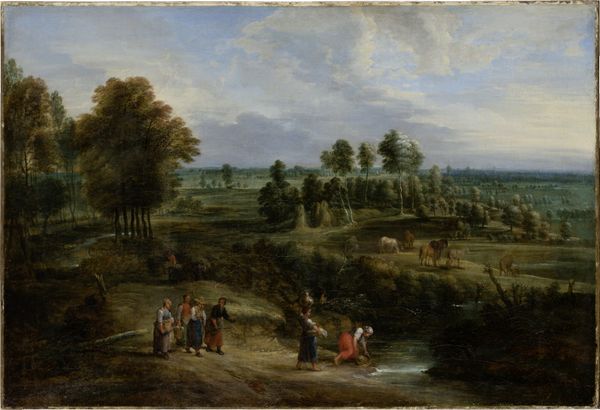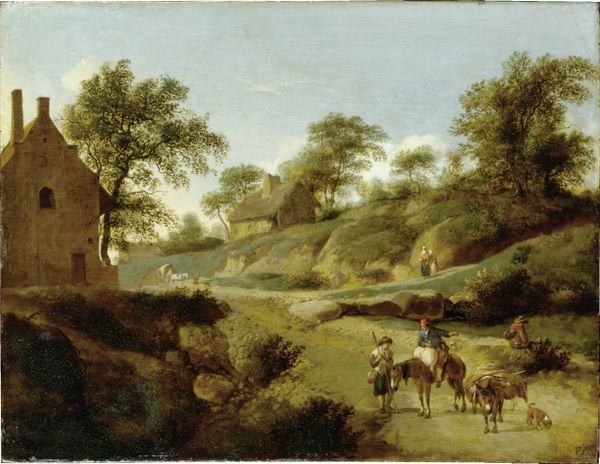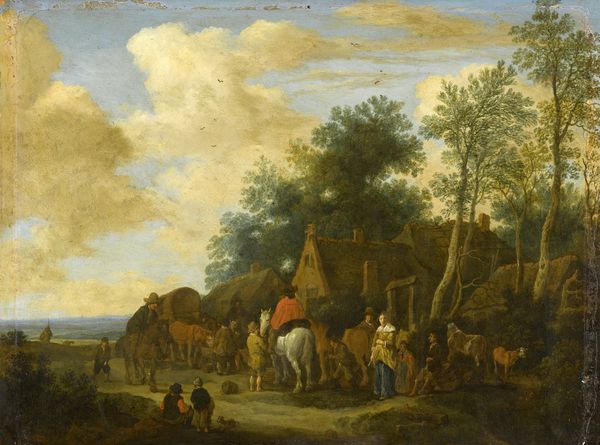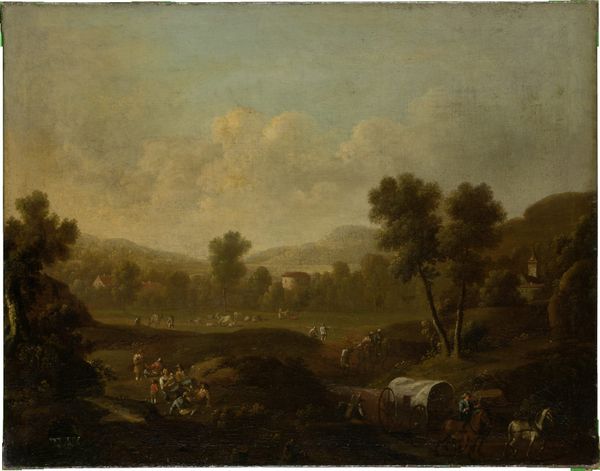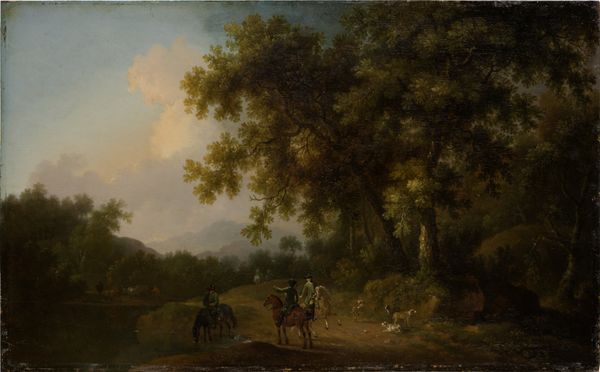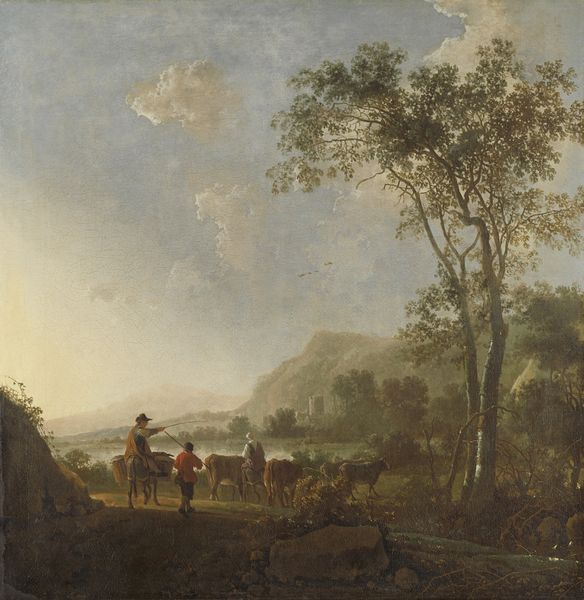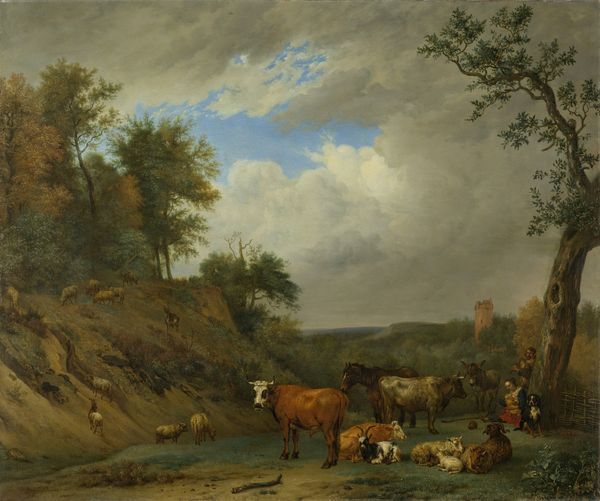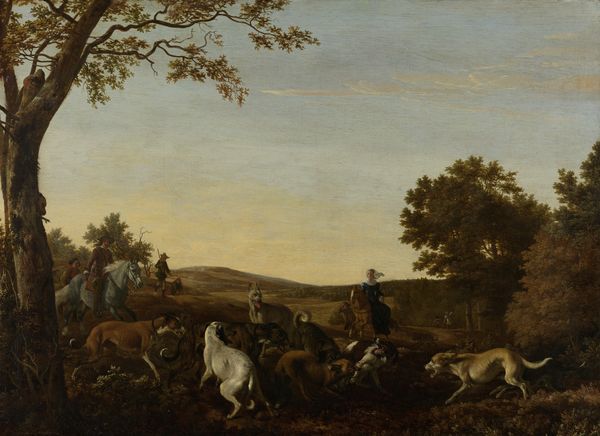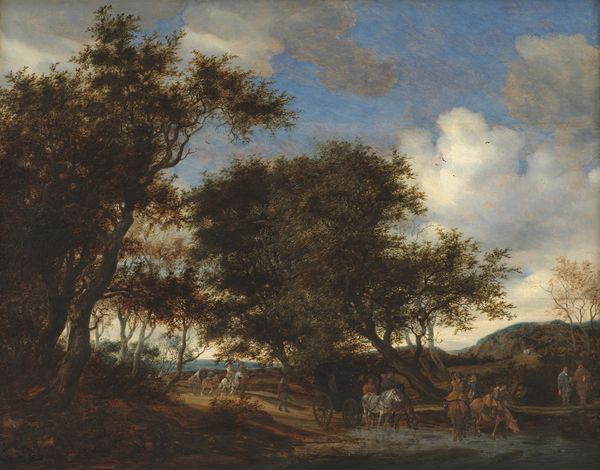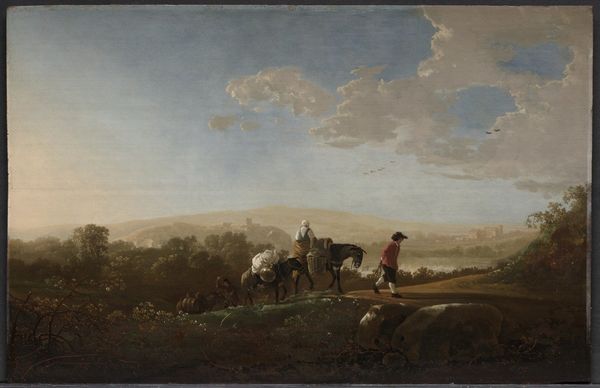
painting, oil-paint
#
baroque
#
painting
#
oil-paint
#
landscape
#
oil painting
#
genre-painting
#
realism
Dimensions: height 51 cm, width 47 cm, depth 5.8 cm
Copyright: Rijks Museum: Open Domain
Editor: So, here we have "Landscape with Mule Driver," an oil painting created by Karel du Jardin between 1650 and 1655, currently at the Rijksmuseum. I’m struck by the ordinariness of it; it feels like a snapshot of everyday life. How do you interpret this work within its historical context? Curator: This seemingly simple genre scene reveals quite a bit about the evolving role of art in Dutch society during that period. These kinds of paintings catered to a rising merchant class. Before, art was primarily commissioned by the church or aristocracy. What does this shift in patronage suggest about the politics of imagery at that time? Editor: That's interesting! It’s almost like this is a subtle celebration of the common person. By having landscapes be bought by merchants to place within their houses, it showed the importance of human role in society. But do you think there is a potential danger of romanticizing poverty and labor in a landscape? Curator: Absolutely. There’s a fine line between celebrating and romanticizing. By showcasing only the aesthetic elements, like the idyllic landscape, artists could inadvertently gloss over the hardships inherent in rural labor. Did these images offer viewers an escape from the rapidly urbanizing world, or did they shape and obscure perceptions of reality? What's your take on that? Editor: It is a lot to unpack within a painting with seemingly not much in it, thanks for the information. It feels that paintings are used to tell specific political tales, rather than mere decorations. Curator: Exactly. These artworks were a commodity, bought and displayed, and reflect the tastes and socio-political views of the time. Understanding the market and its viewers allows us to understand the visual dialogue of that time.
Comments
No comments
Be the first to comment and join the conversation on the ultimate creative platform.
